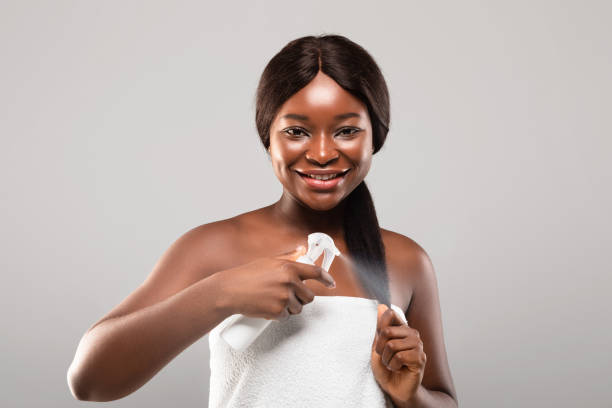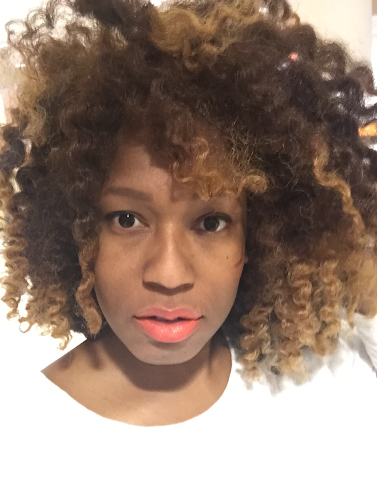
Do you recall a time when haircare was simple? I do! Up until the time I got a relaxer haircare was straightforward. My Mama would shampoo, condition and put my hair in plaits on Friday. Then on Sunday, she and I would spend an hour in the kitchen bonding over the pressing comb and jar of Blue Magic. Fast forward to the present, a time when those things your Mama and Granny used to don't quite jive with YouTube, the Internet, the science, the practical knowledge and the array of products that we now have available to us.
It seems that with all the information at the tips of our fingers somehow things have gotten hella confusing. Since starting the #30dayhairdetox, I have learned a great deal from the hundreds of women who actively participated in our private Facebook group, along with the many professionals that I follow on social media. I recently asked them to share some hair care practices that they were doing prior to the detox that they believe are totally overrated now and here's what they had to say:
1. Using Grease, Oils and Butters
Grease, oils and butters have been the staples of not only the natural hair community but they're a right of passage for every Black girl who has made it through her childhood. In fact, Black women across the country share anecdotes about how their Grannies used grease on their hair and how their hair was down their back. Great story, but the belief shared by many that grease, oils and butters seal the hair is inaccurate. Sorry guys but conditioner actually "seals" the hair and every product that you put on following conditioner is merely just another layer of product. "I was the ponytail princess or I could make an appointment better than anyone I know and now people ask me what I use to make my hair so healthy and shiny and find it hard to believe that I don't use oil," says Crystal T, a #30dayhairdetoxer.
"Heavy oils and butters, such as coconut oil and shea butter, are not the best thing to be putting on our hair; Especially if we aren't using clarifying shampoo regularly," Samantha P adds.
2. Custom Spray Bottles
I'm guilty of having a "refresher" bottle filled with equal parts coconut oil and water. I mean, that's what I heard about on the Internet so I just went with it. That was until I noticed the beads of water sitting atop my hair the same way water beads form on your freshly waterproofed suede boots. I quickly found that spraying my hair every day wasn't improving the moisture in my hair so I began to cease and desist. Moisture does indeed come from water, however, that water is only able to get into the hair during the shampoo process. Shampoo lifts the cuticle and conditioner seals the cuticle. Again, anything applied after that is just another layer of product, which is why the contents of your spray bottle bead up on top of your hair.
3. Wash Day
If you search Instagram, you will see an array of posts from women whining over having to wash their hair. It's like something you have to mentally prepare yourself for each and every week immediately after getting through one of these dreaded "Wash Days." I'm here to tell you that Wash Day doesn't have to be an all-day epic affair and that you can actually make it out of the house to hang with the homegirls to get in on some brunch, shopping or cocktail action. Chantelle L can't fathom the idea of going back to her former practices of "using daily conditioner to detangle prior to deep conditioning; then rinsing hair with aloe vera juice prior to putting in leave-in; then twisting the hair until it's 50% dry to retwist with some form of goopy DIY styling mix to increase 'stretch.'" Do you see why the #30dayahairdetox was necessary?!
4. Washing Your Hair in Sections
For many naturals, sectioning the hair into 4 or as many as 8 sections was helpful for getting through the cleansing step. But the problem with sectioning is that it takes up way too much time and it also uses way more product than you would like to part with per cleansing session. I honestly can't remember the last time I parted my hair in sections to cleanse but I'm so grateful I was able to give it up because it was adding too much time to my already long wash session.
RELATED: Is the ‘No-Shampoo’ Trend a Healthy One?
5. Exclusively Co-washing
Somewhere on the Internet shampoo started getting a bad rap because it was allegedly drying out people's hair. So, to avoid being plagued by dry hair, lots of naturals began the practice of exclusively co-washing their hair. The problem with this newly adapted hair care practice is that conditioner does not contain surfactants to lift dirt, oil or buildup from the hair. Another problem is that the cuticle never gets lifted and in turn, the hair is not getting the moisture it needs. "Shampoo is not to be feared and it's good to wash our hair," Chantelle W. another #30dayhairdetoxer shares.
6. Exclusively Using Sulfate-Free Shampoo
Those who couldn't get down with co-washing quickly adopted the practice of not using very strong shampoos. They found strong shampoos that contained sulfates, dried out the hair and stripped them of their sebum. The issue with this practice is that most naturals use heavy oils and butters and then use very mild cleansers that are not able to thoroughly cleanse the hair. Dimitria C. had a wonderful epiphany related to this while doing some household chores. "As I was hand washing my dishes, and yes, I still hand wash even though I have a dishwasher, I thought about what Aeleise and Aishia Strickland always try to impress upon us regarding washing our hair. Basically, we have to get all the products out of our hair with our clarifying washes," she says. "If we don't, it's like leaving your drinking glasses, cups, or other dishes half rinsed with soap residue on them. Who wants to drink or eat out of half-rinsed dishes?"
7. The LOC Method
According to the LOC method, the proper way to layer on a product is to first add your liquid (water), followed by your oil and then top it off with your cream. In some cases, people have found their own way and do LCO instead, as that works better for their hair. However, women who have participated in the #30dayhairdetox have discovered they are no longer using oils. Monica B. surprised herself when she realized how long it had been since she's used oil on her hair. "I haven't used oil in 4 months! Wow, I had to stop and think when was the last time I used oil," she says. When following a simple regimen of cleansing, conditioning and styling, the LOC method goes out the window because it complicates the simple process of choosing an appropriate product to give you your desired style.
8. Making Your Own Concoctions with Food
Making personal concoctions from the items present in one's kitchen has added a new level to DIY. These individuals, known as Kitchen Mixologists, have taken a liking to really doing it all on their own, meanwhile, no one is accounting for the fact that the hair strand is not able to process the foods the same way our digestive systems are able to. That avocado that you insist on making a mask out of would be more valuable to your hair if you just ate it. Food molecules are way too large for the hair to gain any nutritional benefits. "Trying to make a salad on my head does nothing for my hair!!!! I need to eat my food so that my hair gets the benefits from the digesting of those foods," #30dayhairdetoxer Chandra T adds.
9. Protective Styling
Weaves, wigs, braids, crotchets and up-dos have become the new buzzwords in haircare. They have all adopted new identities in this modern world of hairstyling but one hairstylist from California is having a hard time accepting the name and the idea of "protective styling." "I HATE the term, protective style. There is no such thing. We are always protecting our hair. Is adding and maintaining moisture not protective? Hydrated hair is protected hair," hairstylist Roni Jones says.
10. Clay Mask
Clay masks are known in the natural hair community for clarifying the hair. However, I'm not sure where this idea originated but chemist Mellanie Garner sets the record straight. "I will never agree with anyone that says putting clay on their hair is a cleanser, as part of the whole surfactant system and why it works is the actual "mechanical" mechanism of the surfactants," Mellanie shares. "Shampoo has properties that lift up the dirt and other properties that snatch the dirt up once it has been "lifted" or make it easy to rinse away once "lifted" from your hair! You can't get that from clay."
11. ACV (Apple Cider Vinegar)
ACV is another item being used by a number of naturals in place of shampoo. Allegedly, ACV is supposed to clarify the hair but natural hairstylist Aeleise J. says otherwise. "My opinion is that ACV can be great as a rinse to address scalp issues. It has some proven effectiveness against fungi and dandruff. But it's not a hair cleaner," she says.
12. Baking Soda
Baking soda is a method touted for its "cleansing" and cuticle opening abilities for those that struggle with low porosity. Tarchelle B. gave it a try and she warns naturals to "Stay away from baking soda. Trust me.... I had hard "crack" build up on my hair for months."
13. Henna
A lot of naturals take being natural very seriously all the way down to having their hair colored. Many naturals are afraid to color their hair for a number of reasons, but a host of them are not interested in putting any chemicals on their hair...even though water is a chemical (but I don't want to start a riot). "There is a reason you cannot get henna done at any reputable salon. It destroys your hair. From the cuticle to the cortex, it causes permanent, irreversible damage. That initial softness and 'curl loosening'? A pulverized cortex," according to hairstylist Jennifer Rose. "That resulting hardness that you mistake for 'strength'? The cortex hardening into an un-moistrizedable (it's a word today), un-conditionable (that, too) hot a-- mess. It is [a] permanent process. And you guys do it over and over again. If it were actually safe for your hair health, stylists would offer them in salons."
It's great that more people are doing their own hair, but what's not so great is that lots of people are misinformed and don't have adequate information on how to simply cleanse/shampoo, condition and style their hair.
I know a lot of you are going to disagree, but I challenge you to try the #30dayhairdetox and prove us wrong. We're still waiting on someone to contact us to tell us that the #30dayhairdetox is a bunch of bologna. Will it be you?
 Aishia Strickland is a full-time mom to a little Chocolate Prince, lover of multi-textured hair, tastemaker, Editor of Chocolate Curls Beauty and co-creator of the #30DayHairDetox!
Aishia Strickland is a full-time mom to a little Chocolate Prince, lover of multi-textured hair, tastemaker, Editor of Chocolate Curls Beauty and co-creator of the #30DayHairDetox!








